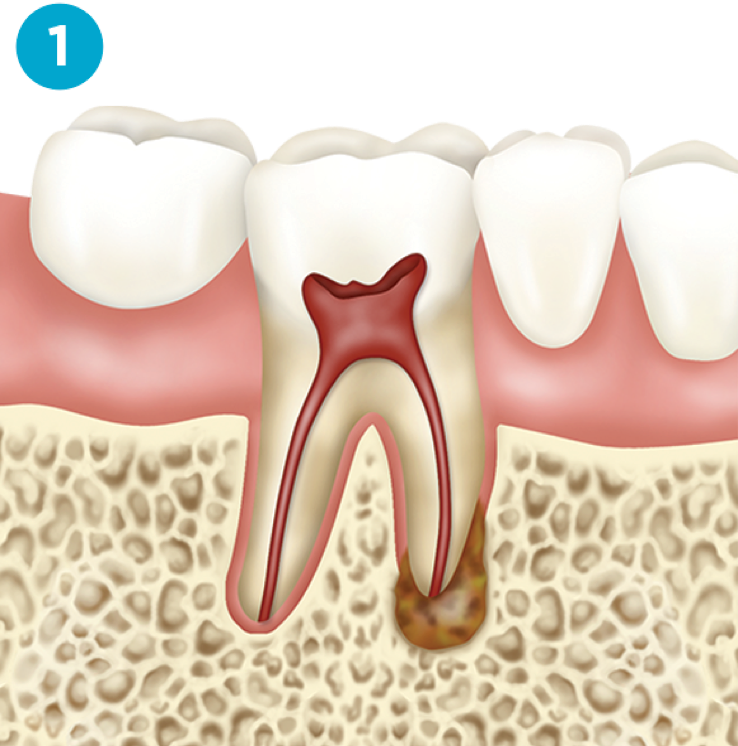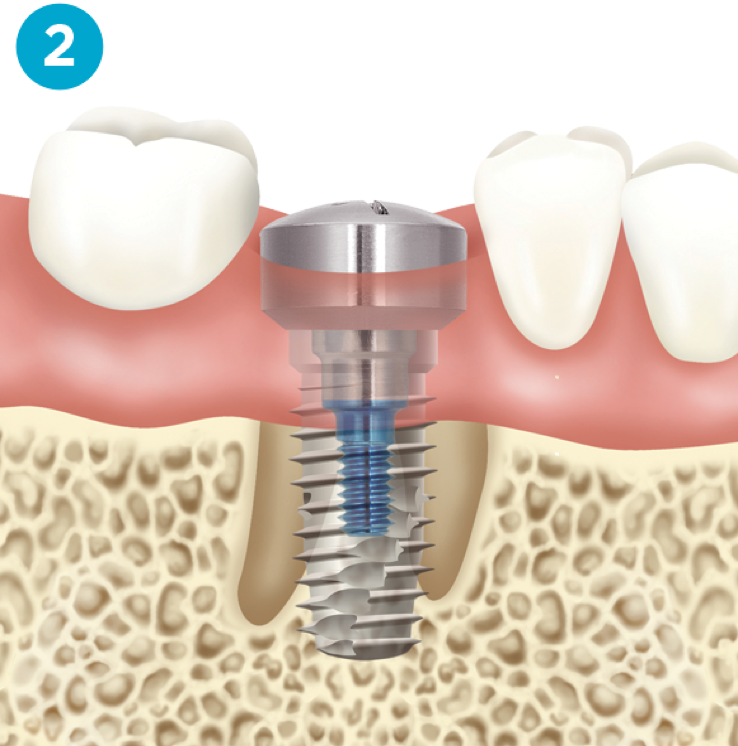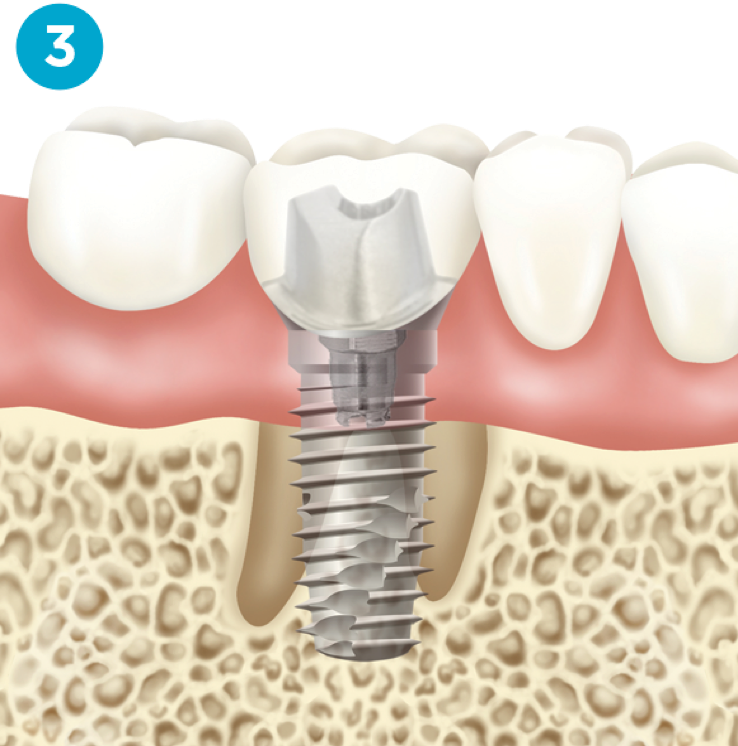A successful implant requires teamwork from all involved – the patient, the general dentist who makes the abutment and crown for the implant, the dental laboratory who fabricates the abutment and restoration, and the oral and maxillofacial surgeon who surgically places the implant. Each member of the team follows a careful plan of treatment and maintains clear communication so that the final result meets the patient’s expectations.
What to Expect
What to Expect
A successful implant requires teamwork from all involved.

Implant Sequence

Step 1: Your surgeon removes the tooth and places a Dental Implant

Step 2: It heals for 3 months.

Step 3: Your dentist fabricates a custom implant abutment and restoration.

Implant Procedure
Following an evaluation that includes a comprehensive examination, radiographs and a consultation with the patient and members of the implant team, the surgeon places the implant under the gums in the jaw.
Often, the surgeon can remove the tooth needing replacement and place the dental implant at the same surgical appointment.
Patients are surprised to learn that this procedure is often performed in about one hour, and requires only local anesthesia so the patient is awake. You are able to drive to and from your surgical appointment. If you are nervous about the surgery, you may also consider intravenous anesthesia.

Local Anesthesia
Oral and maxillofacial surgeons are trained to appropriately administer local anesthesia, all forms of sedation and general anesthesia. They are experienced in airway management, endotracheal intubation, establishing and maintaining intravenous lines, and managing complications and emergencies that may arise during the administration of anesthesia. Prior to surgery, your surgeon will review your anesthesia options.

Recovery
Most patients take the day off after implant surgery. During the three month healing period, patients are able to resume a normal active lifestyle, travel, and workout routine.

Restoration
After the implant is properly fused to the bone, you will be referred to the dentist after three months. Your general dentist obtains an impression of the upper and lower jaws. This impression is used to make the model from which the dentures or crowns are completed.
Your dentist may use a digital impression, impression materials and dental trays are not needed. At your surgical release appointment, your surgeon will obtain an intraoral scan of your teeth and gums. This digital impression saves time, is more accurate and allows the dentist to design and manufacture your abutment and crown in advance of your appointment. You only need to visit your dentist one time to receive your new crown.
Throughout the course of your treatment, the dentist and surgeon together with the dental laboratory work as a team to provide an optimal, long-term solution to your dental needs.
FIND YOUR ASIRD TEAM
Find the implant team in your area. The American Society of Implant & Reconstructive Dentistry (ASIRD) is growing quickly. Our highly skilled dentist and oral surgeon teams work together, utilizing state-of-the-art dental implant technology, to create your custom implant solution. To find your ASIRD team, choose a location from the map, or simply submit your zip code below.